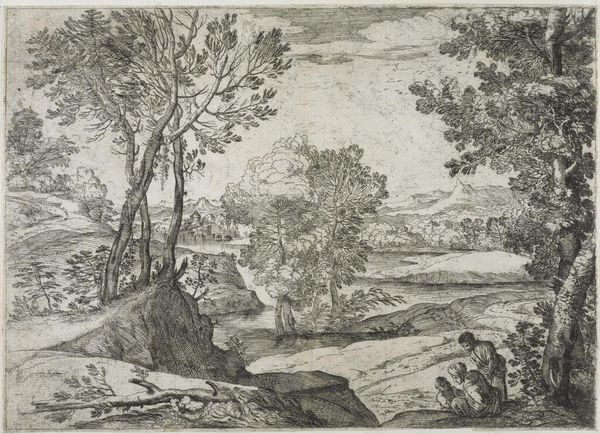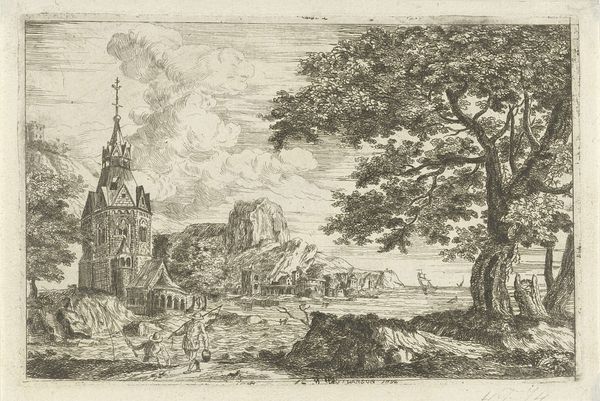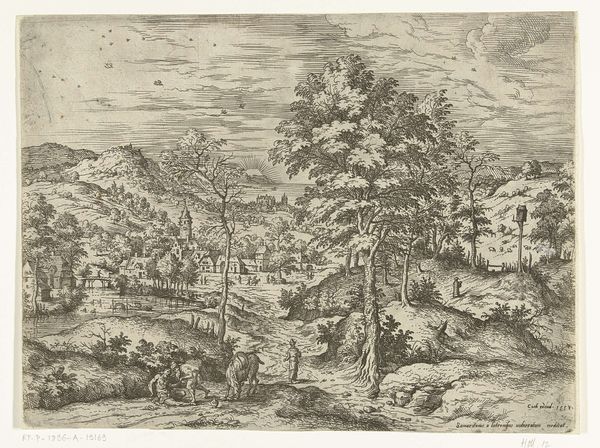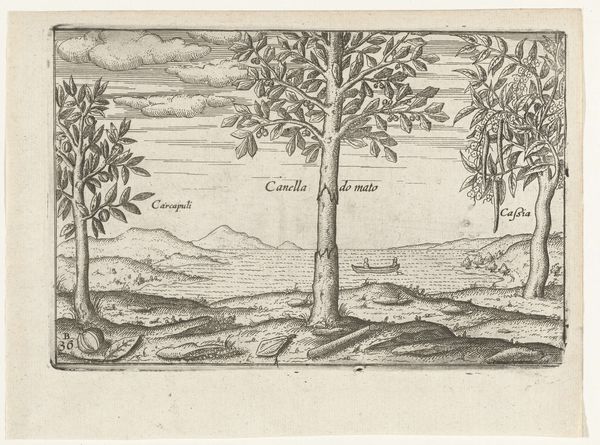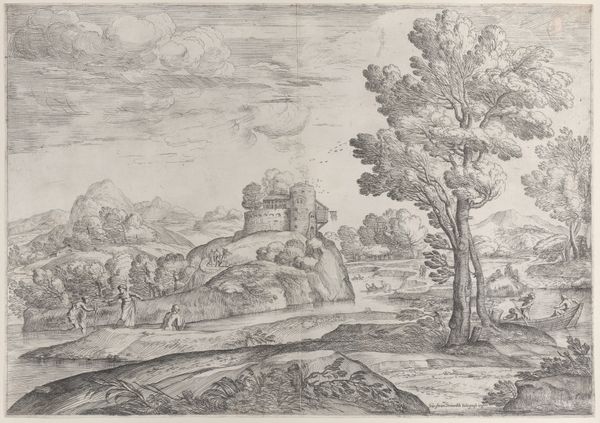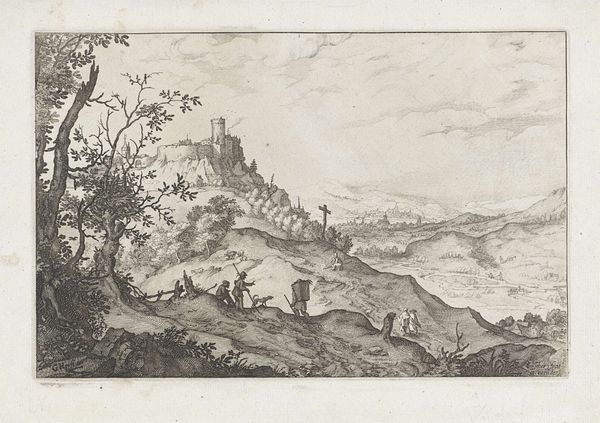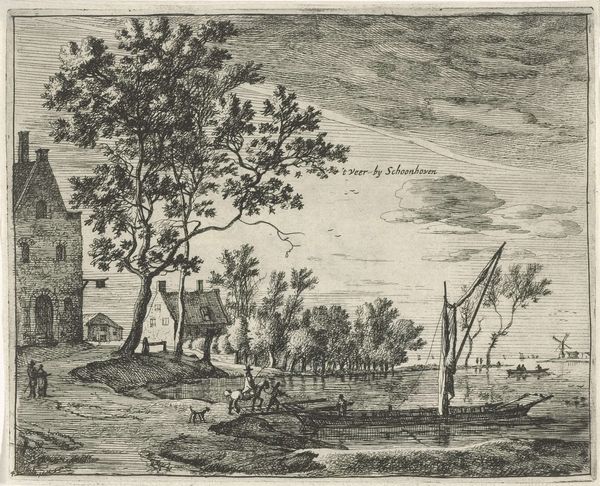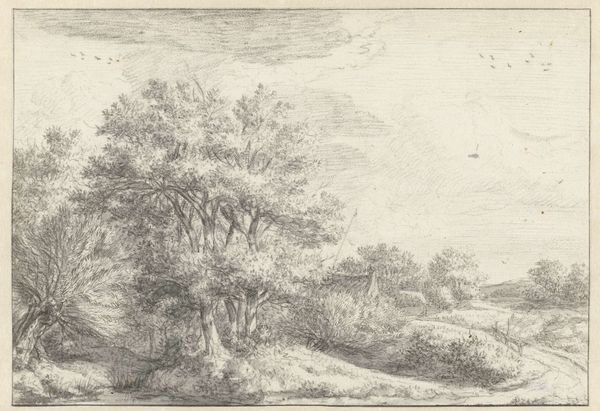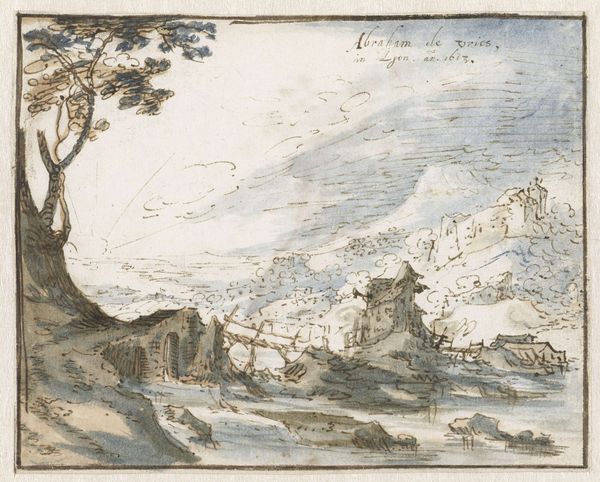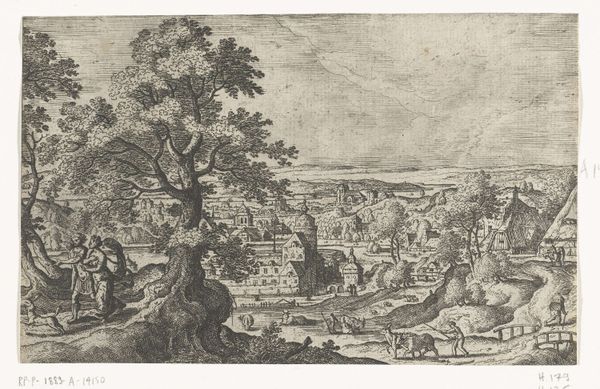
drawing, etching, ink
#
drawing
#
baroque
#
etching
#
landscape
#
ink
#
genre-painting
Dimensions: height 93 mm, width 210 mm
Copyright: Rijks Museum: Open Domain
Curator: Looking at "Landscape with travelers and pack asses," made in 1626 by Charles de Hooch, an etching rendered in ink and presenting as genre painting within a landscape style... Editor: It's strikingly melancholic. The stark lines and contrasts almost feel like a scene from a cautionary tale rather than a serene depiction of travelers. The twisted tree dominates the space with such skeletal lines, and the heavy contrast makes it seem barren, almost oppressive. Curator: Notice how De Hooch's choice of etching emphasizes the linear elements. This etching would have been made by covering a metal plate with wax, scratching lines into the wax with a needle, and then bathing the plate in acid to create the recessed lines that hold the ink. This is then transferred to paper via a printing press. Knowing the process tells us that every line, every shadow, every detail, has been carefully plotted, adding to that sense of intent. And indeed, it’s a genre painting – this intends to speak to everyday life. Editor: I’m interested in the placement of the mill on the side, contrasting with the rest of the picture; do you feel there’s an element of idealization? The way the elements converge around it pulls your eye toward this humble setting in an almost sublime composition of natural forms like rocky outcroppings. Curator: These pastoral scenes were incredibly popular during this time period, a kind of idealised, simplified depiction of peasant life in a pre-industrialized landscape. This would sell incredibly well to merchants in cities such as Haarlem. Each impression created by de Hooch could reach hundreds, if not thousands of eager customers across Europe. And that demand shaped its making, of course. Editor: Considering that broader context helps. Though initially I felt it as gloomy, knowing that this landscape also presents a very appealing vision of pastoral simplicity gives the scene another level of contrast and irony, perhaps? De Hooch’s method involved precision and practicality to deliver that appeal, while speaking volumes. Curator: Precisely. Thinking through the modes of production and reception really enriches the reading of this work, I feel. Editor: Absolutely, understanding these contrasts and the means of their material construction has really deepened my understanding of its effect on viewers then and now.
Comments
No comments
Be the first to comment and join the conversation on the ultimate creative platform.
